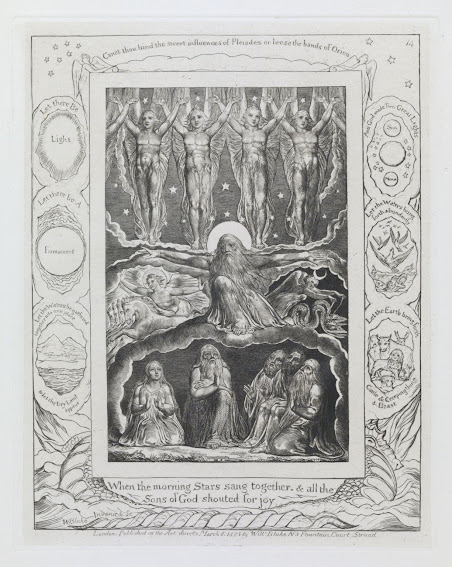New Discoveries in Science
The Early Modern Era saw a lot of worldly change. World Wars I and II happened, the Great Depression killed the American economy and effected a few other nations as well. The perspective on life of most, or even all, people changed. Even with these events, that seem like setbacks in the scientific world, new discoveries and inventions were made.This week, I will highlight some very notable inventions of this astounding era.
Living Art
Alexander Fleming discovered penicillin in 1928. This is a pretty well-known fact, but do you know that this microbiologist was also an artist? It turns out that he was a member of the Chelsea Arts Club, and in this club, he painted. He was more than your usual painter though. This man painted using bacteria in his lab! The pigments in the works below are given by different species of bacteria.
These works are untitled, but were painted/drawn in with bacteria by Alexander Fleming around the time he made his breakthrough discovery mentioned above. The place of their creation is not exactly known, but was likely in his lab at St. Mary's Hospital in London England. (Smithsonian Magazine)
From the top down, the first two paintings look amateurish and playful, but the third one is quite beautiful. The growth of Fleming's talent in using this bizarre medium is made evident by this selection. Fleming created works that are in the boundary between science and art. I really like the line work of the third painting, and appreciate the odd humor shown in the other two.
Time to Fly
Two important inventions of this time are the airplane and helicopter. First we will look at the first airplane, the Wright Flyer. This machine was developed, built, and flown by Orville and Wilbur Wright in 1903. This photograph shows Orville Wright about to take off in the Flyer with his brother, Wilbur, running beside it.
It isn't known who took this photo. The location is Kitty Hawk, North Carolina. The photo is certainly not an art piece, but is rather a record of a very important day in history, as the brothers were able to make the first flight shortly thereafter. Looking at it makes me feel excited about the event of flight that was soon to come.
Sikorsky's Original Design
Below, you see a sketch done by Igor Sikorsky. Sikorsky was a Russian-American man who developed one of the first helicopters. It is not known where he drew this. This is a clean-cut blueprint design. I think that the line work is very clean and the proportions look accurate (as in symmetrical).
Sikorsky drew his first ideas at a time when technology wasn't advanced enough to actually build from his plans. This is the first drawing of a single main rotor helicopter (which inspired the VS-300), drawn by Sikorsky in 1930. He was able to build this helicopter in 1938 (sikorskyarchives.com).
Sources
Magazine, S. (2010) Painting with penicillin: Alexander Fleming’s germ art, Smithsonian.com. Available at: https://www.smithsonianmag.com/science-nature/painting-with-penicillin-alexander-flemings-germ-art-1761496/ (Accessed: 17 July 2024).
Devine, V. (2022) Sikorsky S-46 / VS-300 / VS-300A, Igor I Sikorsky Historical Archives. Available at: https://sikorskyarchives.com/home/sikorsky-product-history/helicopter-innovation-era/s-46-vs-300-vs-300a-helicopter/ (Accessed: 17 July 2024).
1903-the first flight (no date) National Parks Service. Available at: https://www.nps.gov/wrbr/learn/historyculture/thefirstflight.htm (Accessed: 17 July 2024).






Hi Jack,
ReplyDeleteTo begin with, thank you for sharing this installment of your blog with me and the rest of the class. As always, it was a joy to read and it’s easy to tell that you put in the required work and effort. I must say this week certainly wasn't a disappointment. Everything from the uniqueness of your pieces to your analysis was spot on, making for a very interesting read. My personal favorite part here was how you gave both an early sketch and photo of an airplane. Both are equally fascinating in their own way, especially when you think how far we have come since that time. Once again, great work!
Vaughan
Hey Jack,
ReplyDeleteI really enjoyed reading your blog post about the early modern art era. It's fascinating how artists during that time were breaking away from traditional styles and exploring new forms of expression. I especially liked your analysis of the influence of societal changes on the art of that period. Looking forward to reading more from you! I love the extreme contrast you picked from the art that you chose. It shows the wide range of the era.
Hello Jack,
ReplyDeleteGreat blog post! Alexander Fleming's bacterial art is quite interesting, with a blend of science and creativity. The Wright brothers' first flight and Sikorsky's helicopter design are things I didn't even consider to be art before, but they totally are, as they are the highlights of the era's innovation. Overall your post covers shows how science and art can combine.